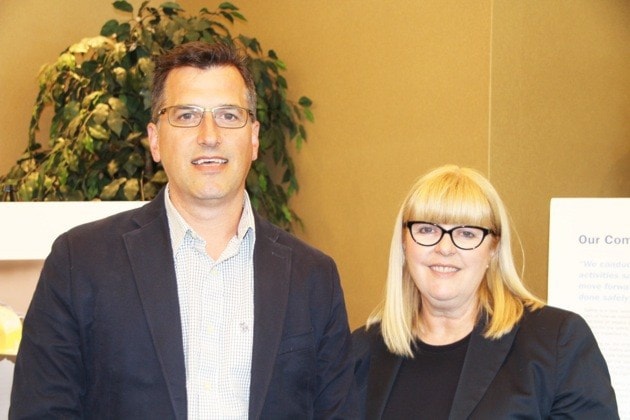New light was shed on the ‘only small in Prince Rupert’ AltaGas propane export project last week with two open houses scheduled in Port Edward and Rupert.
With numerous LNG projects in the mix representing tens of billions of dollars, AltaGas’ terminal registers slightly more than the bat of an eyelash financially, but it’s one project many are quickly looking to provide economic certainty for Ridley Terminals, said company officials last week.
“It’s still quite a significant project ... It’s not a small undertaking, but people throw on these billions of dollars so they think it’s small,” said Dan Woznow, vice president energy exports for AltaGas last week.
Ridley Terminals is looking to divest its product offerings away from coal thanks to a decline in market demand, and representatives from AltaGas is looking to build a West Coast terminal with as minimal environmental impact as possible and already at a place with infrastructure and land designated for industry, had a sense of palpable excitement during the proceedings.
Woznow described finding Ridley Island as the ideal location last Wednesday, among the close to $2 billion worth of assets in B.C.
“We have a nice, small site that’s been developed already, so we don’t have to look at clearing trees and all that. It’s got excellent infrastructure. It’s fully serviced by CN, it’s set up for moving large volumes of commodities, so that’s wonderful,” Woznow said. The location would use the island’s existing marine jetty in its operations.
The AltaGas proposed Ridley Island propane export terminal is a $400-$500 million investment by the Canadian company and would handle 1.2 million tonnes of propane per annum and would offload 50-60 rail cars per day. Twenty to thirty cargos of propane would then be shipped on water to markets like Asia via Very Large Gas Carriers (VLGCs).
The process involves shipping the propane through rail, then transferring the substance to pressurized bullets, chilling it to approximately minus-42 degrees Celsius. The propane is transferred to refrigerated storage and that cooled propane is then placed on VLGCs to be shipped out of Ridley Island. AltaGas is currently operating an environmental assessment process for the proposition.
“This project falls under the Section 67 process under CEAA (Canadian Environmental Assessment Agency) and because of its size, it doesn’t trigger a formal CEAA process. But we still do an environmental assessment and so we produced a project description and we send that out for the community to review and we’re having these public meetings now,” said Woznow, adding that the public has a 30-day review period to send questions or concerns. The regulators are Transport Canada, the Prince Rupert Port Authority and Ridley Terminals.
AltaGas operates a similar facility in Ferndale, WA and has already solicited requests from members of area councils to be given tours of the terminal in the U.S. The facility has been in operation for 40 years without a safety incident and has been operated by AltaGas staff since 2014. The facility on Ridley Island would be built with state of the art technology, said Woznow.
And the demand is there for it after a glut of supply has saturated the North American market.
“We’ve got a bunch of excess propane. We used to move it down [to the States] but now we’re competing with them ... I was just over [in Asia] talking to the folks and in Japan, for example, 24 million households use propane for heating and cooking. It’s also being utilized in Indonesia. They’re moving off of kerosene and they’re using propane because there’s no spill issues. You can have it in cylinders and move it around easier,” he added.
In terms of rail car safety, propane moves in specially designed cars, with thicker walls to carry the pressurized propane and the design is to ensure that the transport is safer, which is regulated by Transport Canada, said the VP.
CN’s Dangerous Goods and Emergency Response division includes 12 Dangerous Goods officers located across Canada and the U.S., 12 employees trained as Dangerous Goods responders across various departments, have specialized emergency response contractors, use shippers’ emergency response teams and Dangerous Goods specialists from the Railway Association of Canada.
AltaGas is preparing for a Final Investment Decision by the end of 2016, would involve local and First Nations contractors in the construction of the facility in the bidding process (200-250 construction jobs) and would hire 40 permanent full-time workers to operate the facility.
“We’re really happy to be in the community up here and I think it’s a nice smaller project that we can hopefully get done,” said Woznow.
